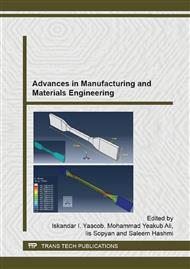p.494
p.499
p.503
p.509
p.513
p.517
p.523
p.527
p.531
Design and Fabrication of a Winged Hybrid Airship Model for IIUM-LSWT
Abstract:
Wind Tunnel Testing on a subscaled model of a winged hybrid airship requires a faithful reproduction of all geometric details of actual airship. Due to huge volume of hull, geometrical parameters of such airships are quite different from that of an aircraft. In this article, a scheme for designing such models is described alongwith a review of different strategies available for manufacturing of its prototype wind tunnel model in IIUM low speed wind tunnel. Similar to aircrafts, major contributing factors for scaling, design and manufacturing of a subscaled model of hybrid airships are discussed. It is concluded that the required aerodynamic data will be the dictating factor for selection of the manufacturing method.
Info:
Periodical:
Pages:
513-516
Citation:
Online since:
July 2015
Price:
Сopyright:
© 2015 Trans Tech Publications Ltd. All Rights Reserved
Share:
Citation:


